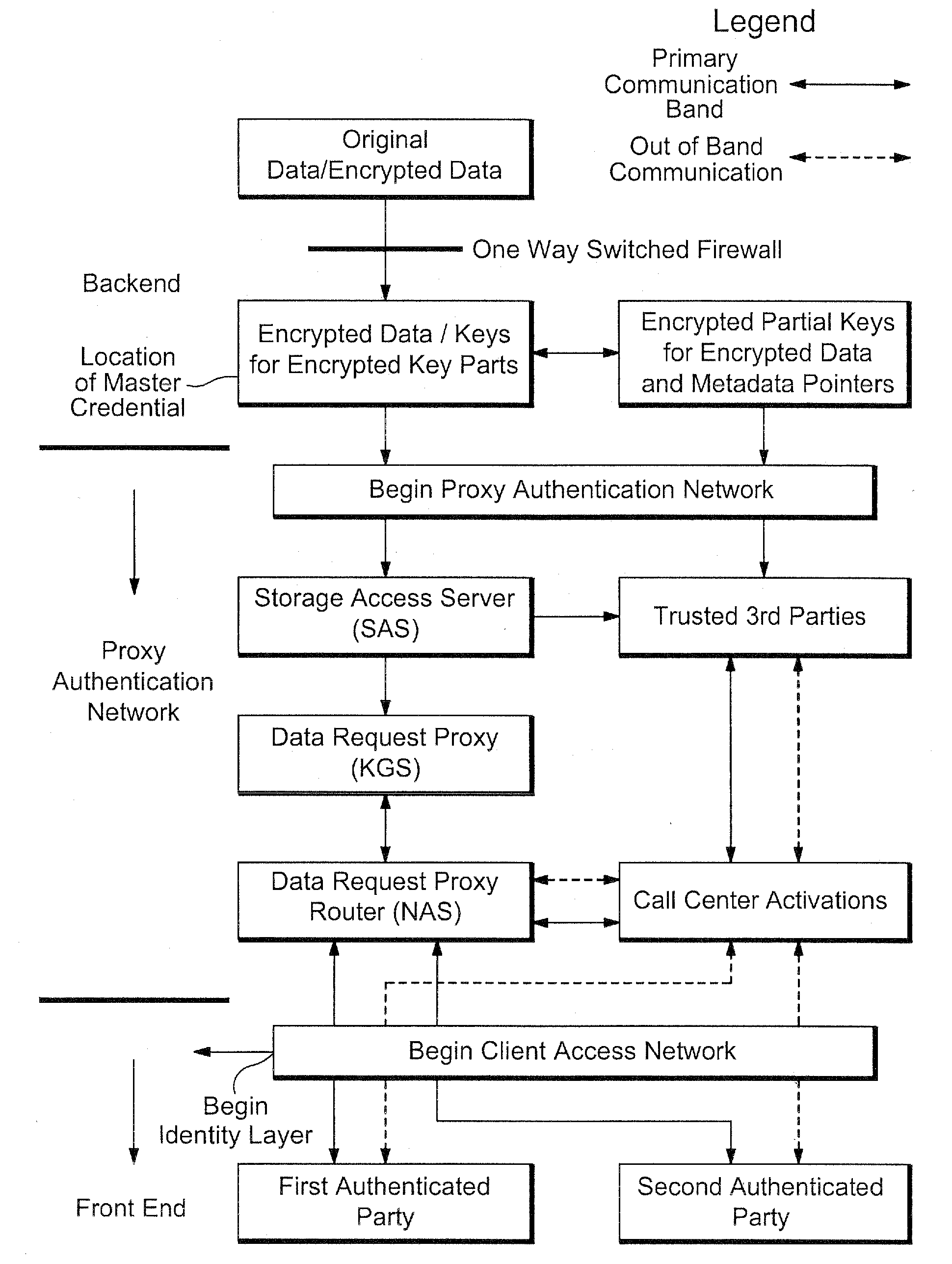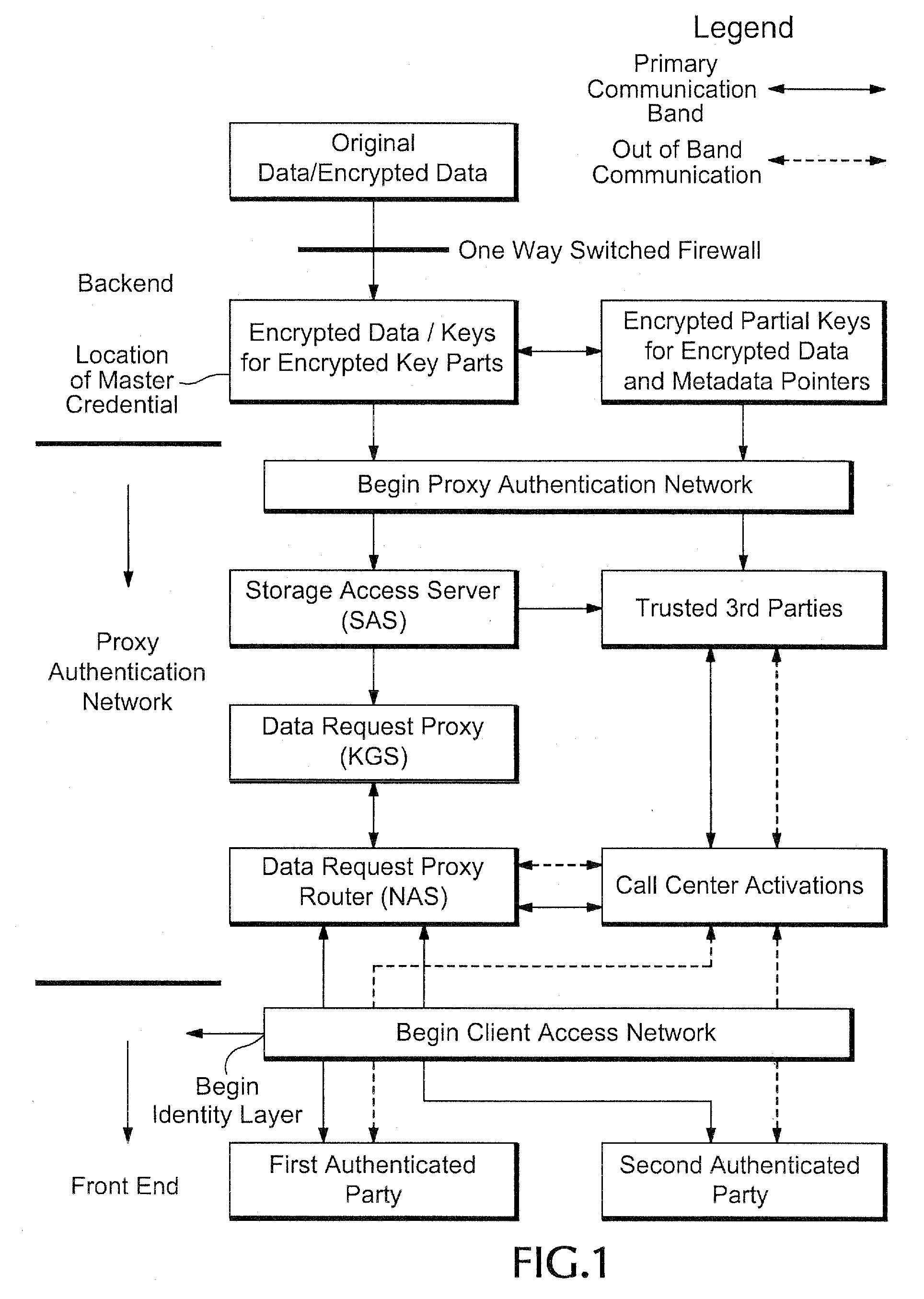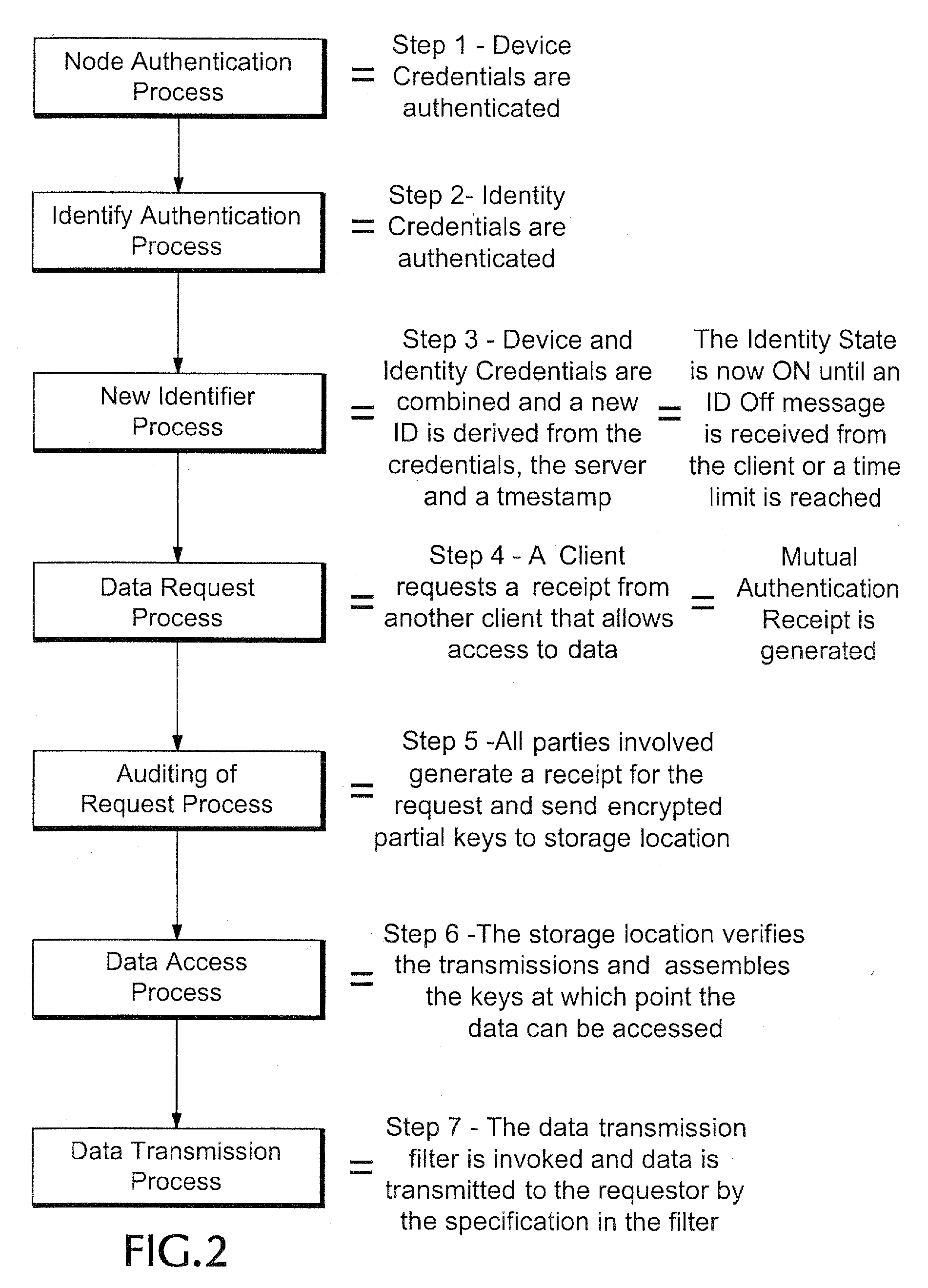Proxy authentication network
a proxy authentication and network technology, applied in the field of identity verification, can solve the problems of insufficient security of authentication methods, difficult and costly maintenance, and high deployment costs
- Summary
- Abstract
- Description
- Claims
- Application Information
AI Technical Summary
Problems solved by technology
Method used
Image
Examples
example implementation
[0177] EXAMPLE IMPLEMENTATION
[0178]FIG. 35 shows various computers that are part of the Proxy Authentication Network of FIG. 1. In FIG. 35, server 3505 is responsible for performing authentication. As such, server 3505 can store the various tables shown in FIGS. 5-9, among other data. Storages 3510, 3515, and 3520 store data for entities. This data, such as data 3525, 3530, and 3535, can be personally identifying data that entities do not want released except under specific circumstances. Server 3505 and storages 3510, 3515, and 3520 are shown as connected by a single network 3540. But a person skilled in the art will recognize that different networks can be used to connect server 3505 and storages 3510, 3515, and 3520. Further, although storages 3510, 3515, and 3520 are shown as connecting directly to server 3505, a person skilled in the art will recognize that the connections can be configured in any manner desired (for example, server 3505 can be directly connected to storage 351...
PUM
 Login to View More
Login to View More Abstract
Description
Claims
Application Information
 Login to View More
Login to View More - R&D
- Intellectual Property
- Life Sciences
- Materials
- Tech Scout
- Unparalleled Data Quality
- Higher Quality Content
- 60% Fewer Hallucinations
Browse by: Latest US Patents, China's latest patents, Technical Efficacy Thesaurus, Application Domain, Technology Topic, Popular Technical Reports.
© 2025 PatSnap. All rights reserved.Legal|Privacy policy|Modern Slavery Act Transparency Statement|Sitemap|About US| Contact US: help@patsnap.com



